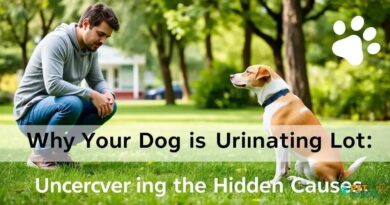What is: Yard hazards for dogs
What Are Yard Hazards for Dogs?
Yard hazards for dogs refer to various dangers that can be found in outdoor spaces where dogs roam. These hazards can pose significant risks to a dog’s health and safety, making it essential for pet owners to be aware of them. From toxic plants to sharp objects, understanding these dangers can help prevent accidents and injuries.
Toxic Plants and Flowers
Many common garden plants and flowers can be toxic to dogs. For instance, azaleas, lilies, and oleander are known to cause serious health issues if ingested. Symptoms of poisoning can range from mild gastrointestinal upset to severe organ failure. It’s crucial for dog owners to research and identify any potentially harmful plants in their yards.
Sharp Objects and Debris
Sharp objects such as broken glass, metal scraps, and sharp stones can pose a significant risk to dogs playing in the yard. These items can cause cuts, puncture wounds, and other injuries. Regularly inspecting the yard for debris and ensuring a safe play area is vital for preventing accidents.
Pesticides and Herbicides
The use of pesticides and herbicides in gardens can create hazardous environments for dogs. Many of these chemicals are toxic and can lead to severe health problems if ingested or absorbed through the skin. Pet owners should consider using pet-safe alternatives or ensuring that their dogs stay off treated areas until it is safe.
Fencing and Enclosures
Inadequate fencing can lead to dangerous situations for dogs. A weak or broken fence may allow dogs to escape, exposing them to traffic, other animals, or potential harm. Ensuring that fences are secure and free from gaps is essential for keeping dogs safe in the yard.
Water Hazards
Water features such as ponds, pools, or fountains can pose drowning risks for dogs, especially if they are not strong swimmers. Supervision is key when dogs are near water, and safety measures such as pool covers or barriers can help prevent accidents.
Insects and Parasites
Yards can harbor various insects and parasites that can harm dogs. Fleas, ticks, and mosquitoes can transmit diseases and cause discomfort. Regularly treating the yard for these pests and keeping dogs on preventive medications can help protect their health.
Heat and Sun Exposure
Excessive heat and sun exposure can lead to heatstroke in dogs, particularly in breeds with thick fur or those that are not acclimated to high temperatures. Providing shaded areas and fresh water, as well as limiting outdoor activity during peak heat hours, is crucial for preventing heat-related illnesses.
Other Animals
Wild animals such as raccoons, skunks, and snakes can pose threats to dogs in the yard. Encounters with these animals can lead to bites, scratches, or the transmission of diseases. Keeping dogs leashed and supervised can help mitigate these risks.
Conclusion
Being aware of yard hazards for dogs is essential for every pet owner. By identifying and addressing these risks, you can create a safer environment for your furry friends to enjoy the outdoors without unnecessary dangers.



